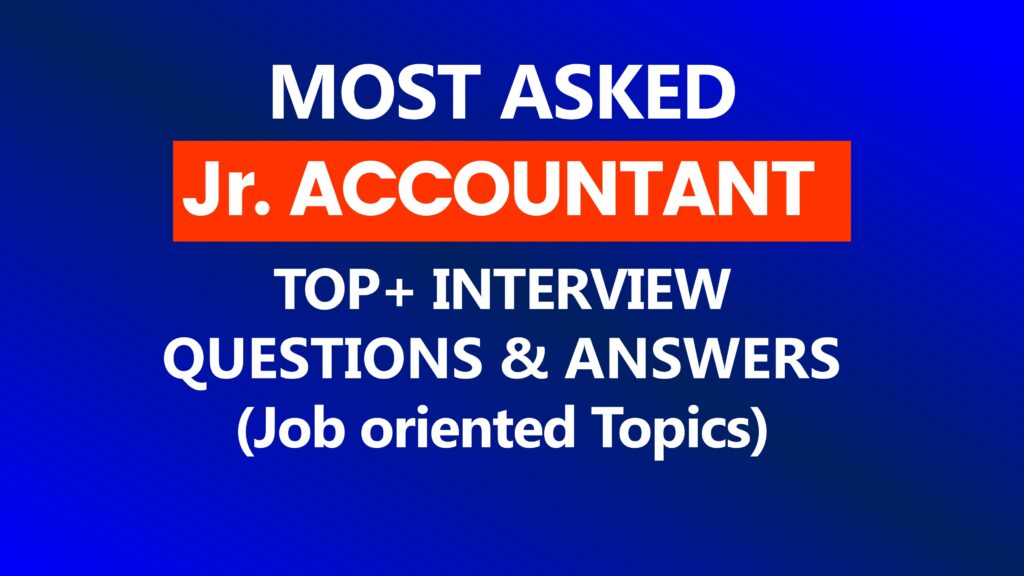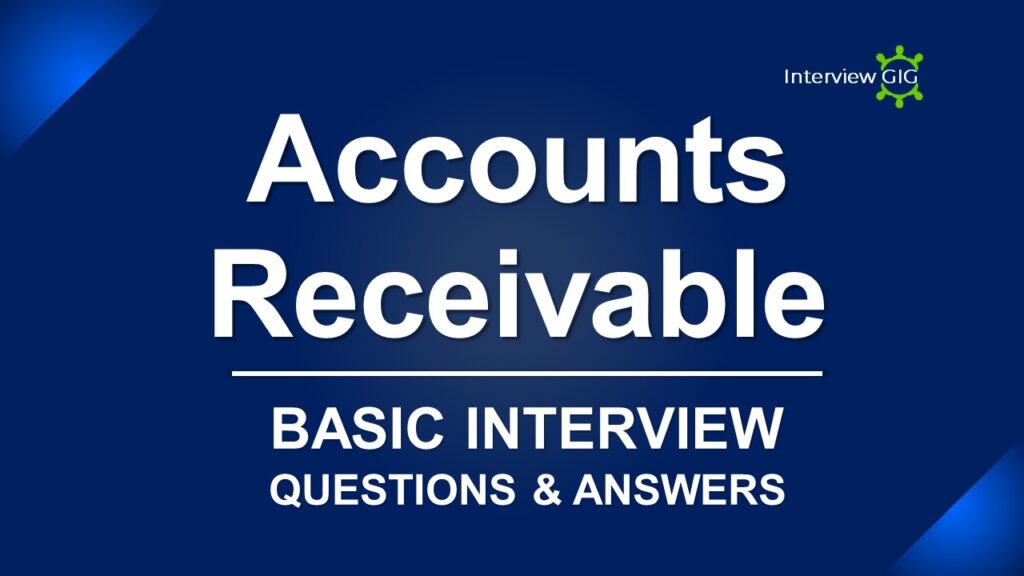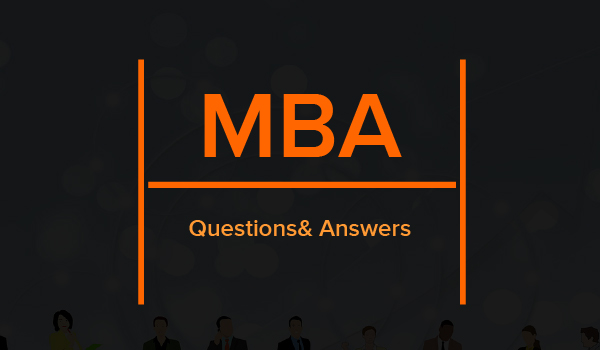R2R Interview Questions and Answers ( Record To Report Interview)
In this guide, we’ll explore the most frequently asked interview questions for Record to Report (R2R) roles, complete with detailed sample answers to help both freshers and experienced candidates prepare effectively. Whether you’re stepping into an R2R role for the first time or looking to enhance your expertise, these insights will help you build confidence and showcase your knowledge. Additionally, we’ll break down key responsibilities in R2R roles, covering tasks like month-end closures, balance sheet reconciliations, and financial reporting essentials. Get ready to dive into the critical skills and knowledge that will set you up for success in R2R interviews!
Question: Could you elaborate on your understanding of the Record to Report (R2R) process?
Answer:
The Record to Report (R2R) process is a key financial management process in organizations. It involves collecting, processing, and delivering accurate financial data to produce timely reports for internal and external stakeholders. The R2R process ensures that all financial transactions are recorded correctly, financial statements are prepared accurately, and regulatory compliance is maintained. It supports decision-making by providing insights into the financial health of the organization and includes activities such as general ledger management, month-end closing, consolidations, and statutory reporting.
Question: What are the key activities involved in the R2R cycle?
Answer:
Key Activities in the R2R Cycle:
- Transaction Capture: This involves collecting and recording financial data from various sources, such as sales, purchases, payroll, and expenses.
- Data Validation: Ensuring the accuracy and completeness of captured data to prevent errors.
- Journal Entry Posting: Recording validated transactions as journal entries in the general ledger.
- General Ledger Reconciliation: Comparing the general ledger balances with subsidiary ledgers (e.g., accounts receivable, accounts payable) to identify discrepancies.
- Financial Reporting: Generating financial statements, such as the income statement, balance sheet, and cash flow statement, based on the general ledger data.
- Financial Close: The final step in the R2R cycle, involving closing the books for a specific period and preparing for the next.
Question: Explain the importance of general ledger in accounting.
Answer: The general ledger is the foundation of accounting. It serves as a central repository for all financial transactions, providing a comprehensive view of a company’s financial health. Key benefits of the general ledger include:
- Accuracy: Ensures accurate financial reporting by providing a detailed record of all transactions.
- Transparency: Offers transparency into a company’s financial activities.
- Compliance: Helps businesses comply with financial regulations and standards.
- Decision-Making: Provides valuable data for informed decision-making.
Question: What is the accounting equation?
Answer: The accounting equation is a fundamental principle in accounting that states:
Assets = Liabilities + Equity
This equation represents the balance of a company’s resources (assets) with its claims on those resources (liabilities and equity).
Question: Can you explain the difference between assets, liabilities, and equity?
Answer:
Assets: Resources owned by a company that have the potential to provide future economic benefits. Examples include cash, inventory, property, plant, and equipment.
Liabilities: Obligations of a company to pay money or provide services to others in the future. Examples include accounts payable, loans, and bonds.
Equity: The residual interest in the assets of a company after deducting its liabilities. It represents the owners’ claim on the company’s assets. Equity can be divided into contributed capital (money invested by owners) and retained earnings (profits accumulated over time).
Question: Please describe your experience with month-end and year-end closing processes.
Sample Answer: I have experience in managing month-end and year-end closing processes, which include preparing and posting journal entries, reconciling accounts, reviewing trial balances, ensuring accurate financial statement preparation, and meeting deadlines. The year-end process involves additional activities such as auditing, tax filings, and finalizing annual financial statements for regulatory compliance.
These processes typically include:
- Reconciling accounts: Comparing account balances to ensure accuracy.
- Adjusting entries: Making necessary adjustments to reflect accruals, deferrals, and other accounting principles.
- Closing entries: Transferring temporary account balances (e.g., revenue, expenses) to retained earnings.
- Preparing financial statements: Generating the income statement, balance sheet, and cash flow statement.
Question: What are the primary financial statements?
Answer:
The primary financial statements are:
Income Statement: Shows a company’s revenues, expenses, and net income or loss for a specific period.
Balance Sheet: Presents a company’s assets, liabilities, and equity at a specific point in time.
Cash Flow Statement: Reports a company’s inflows and outflows of cash from operating, investing, and financing activities.
Question: What is cost accounting, and how does it relate to R2R?
Answer:
Cost accounting involves tracking, analyzing, and managing costs related to production and operations. It helps in determining the cost of goods sold (COGS) and profitability. In R2R, cost accounting data is essential for accurate financial reporting, providing insights into the financial performance of specific areas of the business.
Question: What is inventory accounting, and how is it handled in R2R?
Answer:
Inventory accounting tracks the value of inventory over time, including purchases, sales, and stock adjustments. In the R2R process, inventory accounting involves ensuring that inventory values are correctly reflected in the general ledger and financial statements, calculating cost of goods sold (COGS), and performing regular reconciliations to maintain accurate records.
Question: Can you provide an example of a simple journal entry?
Answer:
Example of a Simple Journal Entry
Journal Entry:
- Date: January 1, 2024
- Account Debited: Cash
- Account Credited: Common Stock
- Amount: 10,000 rupees
Explanation: This journal entry records the issuance of common stock in exchange for 10,000 rs in cash. The cash account is debited (increased) to reflect the inflow of cash, and the common stock account is credited (increased) to represent the issuance of new ownership shares.
Question: What is variance analysis, and why is it performed?
Answer:
Variance analysis is a technique used to compare actual results with budgeted or expected results. It helps identify differences (variances) between the two and their underlying causes. Variance analysis is performed to:
- Improve performance: By identifying areas where performance is below expectations.
- Enhance budgeting: By providing insights for more accurate future budgets.
- Increase accountability: By holding individuals and departments accountable for their performance.
Question: What is the difference between accruals and prepayments?
Answer:
Accruals: Expenses or revenues that have been incurred or earned but not yet paid or received. For example, if a company receives services in December but doesn’t pay for them until January, it would accrue an expense in December.
Prepayments: Expenses or revenues that have been paid or received in advance. For example, if a company pays for insurance for the entire year in January, it would prepay the insurance expense.
Question: Why are accruals important in financial reporting?
Answer: Accruals are crucial for accurate financial reporting because they ensure that expenses and revenues are recognized in the correct period, regardless of when cash is exchanged. This helps to provide a more complete and accurate picture of a company’s financial performance.
Question: What is your experience with revenue recognition under US GAAP or IFRS?
Sample Answer: I have experience ensuring compliance with the revenue recognition principles under both US GAAP and IFRS, including the recognition of revenue when it is earned, realizable, and measurable, and understanding the key standards like ASC 606 (GAAP) and IFRS 15.
Both US GAAP and IFRS have similar principles for revenue recognition, which require companies to:
- Identify the contract: Determine the nature and scope of the contract.
- Identify the performance obligations: Determine the specific goods or services to be transferred to the customer.
- Determine the transaction price: Determine the amount of consideration expected to be received from the customer.
- Allocate the transaction price: Allocate the transaction price to the performance obligations.
- Recognize revenue: Recognize revenue when a performance obligation is satisfied.
Question: What is an SOP, and why is it important in accounting?
Answer:
SOP (Standard Operating Procedure)
An SOP is a set of instructions or guidelines that outlines the steps required to complete a specific task or process. SOPs are important in accounting because they:
- Ensure consistency: By providing a standardized approach to tasks.
- Improve efficiency: By streamlining processes and reducing errors.
- Enhance compliance: By helping organizations adhere to regulations and standards.
- Facilitate training: By providing a clear guide for new employees.
Question: Could you explain your approach to fixed asset accounting and depreciation?
Answer:
Fixed asset accounting involves recording, tracking, and depreciating long-term assets used in a company’s operations. My approach to fixed asset accounting typically includes:
- Capitalization: Determining which assets should be capitalized based on their cost and expected useful life.
- Depreciation: Calculating depreciation expense using appropriate methods (e.g., straight-line, declining balance).
- Tracking: Maintaining detailed records of fixed assets, including acquisition date, cost, useful life, and depreciation method.
- Disposals: Recording the disposal of fixed assets and recognizing any gains or losses.
Question: Explain how you post accruals and prepayments during the month close.
Question: During the month-close process, I would post accruals and prepayments to ensure that expenses and revenues are recognized in the correct period. This typically involves:
- Accruals: Recording expenses that have been incurred but not yet paid (e.g., accrued interest, accrued salaries) by debiting an expense account and crediting a liability account.
- Prepayments: Adjusting prepaid expenses to reflect the portion used during the month by debiting an expense account and crediting the prepaid asset account.
Question: What is your experience with supporting audit processes?
Sample Answer: I have experience in preparing supporting documentation, reconciling accounts, and ensuring compliance with accounting policies during audits. I work closely with auditors to address queries, provide financial statements, and ensure all entries and disclosures are accurate.
Question: How do you prepare for an audit in the R2R context?
Sample Answer: Preparation includes reconciling all accounts, ensuring all financial records are accurate and complete, preparing necessary documentation (e.g., trial balances, fixed asset registers, general ledger), and ensuring that all transactions are supported by proper evidence. Additionally, I ensure compliance with accounting standards and regulatory requirements.
To prepare for an audit in the R2R context, I would:
- Review financial records: Ensure that financial records are complete, accurate, and up-to-date.
- Identify potential risks: Assess areas of the R2R process that may be subject to audit scrutiny.
- Gather supporting documentation: Collect and organize supporting documentation for key transactions and balances.
- Train staff: Educate staff on audit procedures and expectations.
- Proactively address issues: Identify and address any potential issues before the audit begins.
Question: Explain the role of intercompany recharges and reconciliations.
Answer: Intercompany recharges are transactions between related companies, where one company provides goods or services to another and charges a fee. Intercompany reconciliations are the process of comparing and reconciling intercompany transactions between related entities to ensure accuracy and completeness.
Intercompany recharges and reconciliations are important for:
Financial accuracy: Ensuring that financial statements accurately reflect the economic substance of transactions between related companies.
Tax compliance: Complying with tax regulations related to intercompany transactions.
Internal control: Strengthening internal controls to prevent errors and fraud.
Question: How do you manage SLAs for month-end close and reporting processes?
Sample Answer: SLAs (Service Level Agreements) are essential for ensuring timely and accurate month-end close and reporting processes.
I ensure that the Service Level Agreements (SLAs) for month-end close and reporting are met by creating a detailed checklist, adhering to deadlines, coordinating with relevant teams, and using automation tools where possible. Regular monitoring of tasks and early identification of potential delays help maintain timelines.
Question: What is the role of financial controls in the R2R process?
Answer: Financial controls ensure accuracy, completeness, and compliance in financial reporting. They help prevent errors, fraud, and misstatements by ensuring all transactions are authorized, recorded properly, and backed by supporting documentation. Strong controls are critical for maintaining the integrity of the R2R process.
Question: What is the significance of journal entries in the R2R process?
Answer: Journal entries are the foundation of the R2R process. They ensure that all financial transactions are accurately recorded in the general ledger. Proper journal entries, such as accruals, prepayments, and adjustments, are essential for correct financial reporting, reflecting a true picture of the company’s financial position.
Question: How do you perform variance or trend analysis in the R2R process?
Sample Answer: I perform variance analysis by comparing actual financial data to budgets or forecasts, identifying deviations, and investigating the reasons behind them. Trend analysis involves examining financial data over multiple periods to identify patterns and assess performance. Both methods help improve forecasting, budgeting, and decision-making.
Question: Can you explain GAAP adjustment entries and their importance in financial reporting?
Answer: GAAP adjustment entries are necessary to ensure that financial statements comply with Generally Accepted Accounting Principles (GAAP). These adjustments are made to:
- Accrue expenses or revenues: Recognize expenses or revenues that have been incurred or earned but not yet paid or received.
- Correct errors: Identify and correct errors in financial records.
- Reflect changes in accounting estimates: Adjust for changes in accounting estimates, such as the useful life of fixed assets.
- Adjust for non-monetary transactions: Account for non-monetary transactions, such as stock-based compensation.
Question: What is your experience with managing transition and international R2R processes?
Sample Answer: I have experience managing transitions by ensuring smooth handovers of accounting processes, aligning procedures with corporate policies, and training teams to handle the R2R tasks. For international R2R, I handle multiple currencies, adhere to local GAAP/IFRS standards, and ensure consistent financial reporting across different regions.
Question: How do you handle revenue consolidation and reporting for international subsidiaries?
Sample Answer: I consolidate revenue by converting local currencies to the reporting currency, applying consistent accounting policies, and eliminating intercompany transactions. I ensure that international subsidiaries’ financials are aligned with the parent company’s reporting standards, maintaining compliance with both local and global regulations.
Question: Explain the process of FX revaluation in R2R and how it impacts the balance sheet.
Answer: FX revaluation is the process of adjusting the value of foreign currency-denominated assets and liabilities to reflect changes in exchange rates. This can have a significant impact on the balance sheet, as it can create gains or losses.
The process of FX revaluation typically involves:
- Determining the functional currency: Identifying the currency that primarily affects the economic results of the entity.
- Identifying foreign currency-denominated items: Identifying assets and liabilities that are denominated in foreign currencies.
- Calculating the exchange rate difference: Determining the difference between the original exchange rate used to record the item and the current exchange rate.
- Recording the gain or loss: Recording any gain or loss arising from the exchange rate difference in the income statement.
Question: What role does automation play in your R2R process?
Answer: Automation helps streamline the R2R process by reducing manual work, improving accuracy, and speeding up tasks like journal entries, reconciliations, and financial reporting. Automation tools can also flag anomalies, ensure compliance with deadlines, and reduce the risk of errors in the month-end and year-end close processes
Question: Explain how you handle bank postings and account clearing in the R2R process.
Answer: Bank postings involve recording all cash inflows and outflows from the bank accounts into the general ledger. Account clearing is the process of matching and reconciling transactions, such as clearing outstanding payments or receipts. I ensure that all bank transactions are accurately posted, matched with corresponding entries, and reconciled to avoid discrepancies between bank and ledger balances.
Question: What are the key challenges in intercompany reconciliations, and how do you address them?
Sample Answer: Common challenges include timing differences, currency discrepancies, and missing or incorrect intercompany entries. I address these by ensuring clear communication between entities, standardizing processes, regularly reconciling balances, and using automation tools to match transactions and flag discrepancies early.
Question: How do you ensure the completeness and accuracy of bank reconciliations?
Sample Answer: I reconcile bank statements with the general ledger by verifying that all transactions are recorded, matched, and cleared. I use automation tools to minimize manual errors, regularly review unreconciled items, and ensure that all outstanding transactions are addressed promptly to maintain accurate records.
Question: Can you describe a process improvement initiative you led in the R2R process?
Sample Answer: One initiative I led involved automating the journal entry and reconciliation processes. By implementing an automated tool, we reduced manual work, improved the accuracy of entries, and shortened the month-end close cycle. This initiative improved efficiency and reduced errors in financial reporting.
Question: What KPIs do you track in the R2R process, and how do you ensure they are met?
Answer: Key KPIs include the accuracy of financial statements, time taken for month-end close, percentage of reconciled accounts, and compliance with regulatory deadlines. I ensure these KPIs are met by monitoring processes, using automation to increase efficiency, and setting clear timelines for task completion.
Question: What steps do you take to continuously improve the R2R process?
Sample Answer: I regularly review and analyze current processes to identify bottlenecks and inefficiencies. I implement automation where possible, provide training to teams, ensure adherence to best practices, and maintain open communication across departments to streamline workflows and drive continuous improvement.





